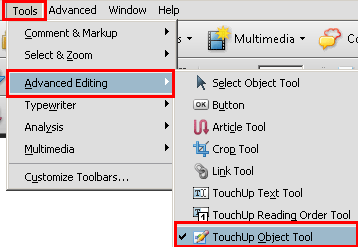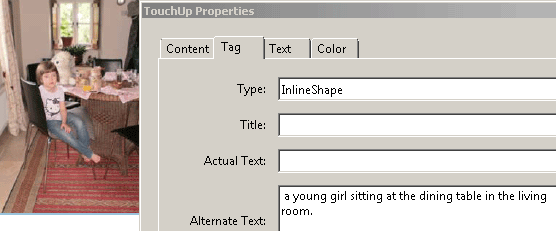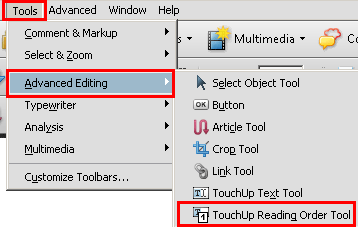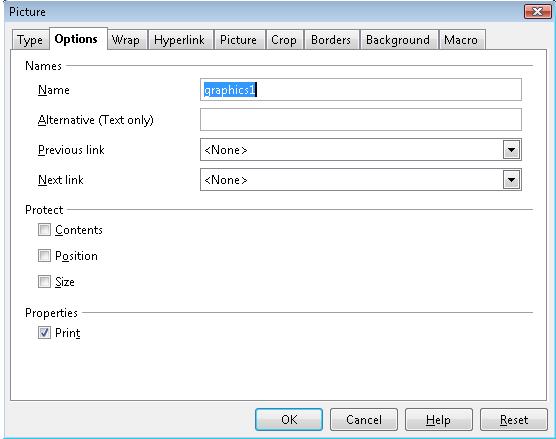Tagged PDF documents with images
This technique relates to:
See PDF Technology Notes for information on user agent and assistive technology support.
The objective of this technique is to provide text alternatives for images via an /Alt entry in the property list for a Tag. This is normally accomplished using a tool for authoring PDF.
PDF documents may be enhanced by providing alternative descriptions for images, formulas, and other items that do not translate naturally into text. In fact, such text alternatives are required for accessibility: alternate descriptions are human-readable text that can be vocalized by text-to-speech technology for the benefit of users with vision disabilities.
When an image contains words that are important to understanding the content, the text alternative should include those words. This will allow the alternative to accurately represent the image. Note that it does not necessarily describe the visual characteristics of the image itself but must convey the same meaning as the image.
This example is shown with Adobe Acrobat Pro. There are other software tools that perform similar functions. See the list of other software tools in PDF Authoring Tools that Provide Accessibility Support.
Choose Tools > Advanced Editing > TouchUp Object Tool

Access the context menu for the image and choose Properties.
On the TouchUp Properties dialog, select the Tag tab.
On the Tag panel, type the text alternative in the Alternate Text text box.

This example is shown in operation in the working example of Adding an /Alt entry to an image.
This example is shown with Adobe Acrobat Pro. There are other software tools that perform similar functions. See the list of other software tools in PDF Authoring Tools that Provide Accessibility Support.
Choose Tools > Advanced Editing > TouchUp Reading Order Tool

The TouchUp Reading Order dialog will be displayed.
Right-click on the image and choose Edit Alternate Text.
The Alternate Text dialog will be displayed.
Type the text alternative in the Alternate Text text box.

This example is shown with Microsoft Word. There are other software tools that perform similar functions. See the list of other software tools in PDF Authoring Tools that Provide Accessibility Support.
This example is shown with Open Office.org Writer. There are other software tools that perform similar functions. See the list of other software tools in PDF Authoring Tools that Provide Accessibility Support.
Access the context menu for the image and choose Picture...
Select the Options tab
Type the alternative text into Alternate (Text Only) text box and click OK.

The /Alt property used on an image of mountains with a moon and trees typically would be used like this (typically accomplished by an authoring tool):
/Figure <</Alt (Sketch of Mountains with moon rising over trees) >>The image might also be represented by a tag with a different name. A different name might be used because the tag name is written in a language other than English or because a specific tool uses a different name for some other reason. In this situation, it is also necessary that the RoleMap contained within the StructTreeRoot for the PDF document contain an entry which explicitly maps the name of the tag used for the image with the standard structure type used in PDF documents (in this case, Figure). If the RoleMap contains only an entry mapping Shape tags to Figure tags, the rolemap information would appear as follows:
/RoleMap << /Shape /Figure >>In this case, the usage of the /Alt entry as follows would also be correct:
/Shape <</Alt (Crater Lake in the summer, with the blue sky, clouds and crater walls perfectly reflected in the lake) >>
Note that the /Alt entry in property lists can be combined with other entries.
Resources are for information purposes only, no endorsement implied.
Section 14.9.4 (Replacement Text) in PDF 1.7 (ISO 32000-1)
Verify the images which need equivalents have /Alt entries on an enclosing tag by one of the following:
Read the PDF document with a screen reader, listening to hear that the equivalent text is read when tabbing to the non-text object (if it is tabbable) or hearing the alternative text read when reading the content line-by-line.
Using a PDF editor, check that a text alternative is displayed for each image.
Use a tool which is capable of showing the /Alt entry value, such as aDesigner, to open the PDF document and view the GUI summary to read the text alternatives for images.
Use a tool that exposes the document through the accessibility API and verify that images have required text equivalents.
Check 1 is true for each image in the document which needs a text equivalent.
If this is a sufficient technique for a success criterion, failing this test procedure does not necessarily mean that the success criterion has not been satisfied in some other way, only that this technique has not been successfully implemented and can not be used to claim conformance.
Techniques are informative—that means they are not required. The basis for determining conformance to WCAG 2.0 is the success criteria from the WCAG 2.0 standard—not the techniques. For important information about techniques, please see the Understanding Techniques for WCAG Success Criteria section of Understanding WCAG 2.0.